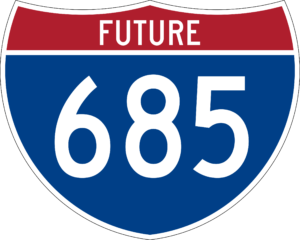 Future I-685 - Central Carolina Freeway
Future I-685 - Central Carolina Freeway First
proposed by economic developer, Jed McMillan on behalf of the
Piedmont Triad Partnership (PTP) to the NCDOT Board on August 3,
2017 in Greensboro to attract more businesses to the region. His new
interstate freeway would travel an upgraded US 421 between
Greensboro and Fayetteville connecting 4 business 'megasites' (the
Aerospace Center at the PTI Airport in Greensboro, the
Greensboro-Randolph County project near Liberty, the Chatham
Advanced Manufacturing site in Siler City, and the Moncure Megasite
on US 1 in Chatham County). The NCDOT Board
took no position on the proposal at the time, nor did the Board
Chair Mike Fox. Though he did comment that parts of US 421 would
not be too hard to upgrade to an Interstate.1
In 2018, in an effort to attract more partners in areas
throughout central North Carolina, the PTP rebranded itself as the
Carolina Core and launched efforts to convince government and
business leaders along the US 421 corridor between Greensboro and
Fayetteville to lobby NCDOT about designating the highway an
interstate. As of 2024 19 counties are using the Carolina Core name
to market economic opportunities and the group has gotten over $20
billion in planned capital investments.2 Here's a map of
the Carolina Core region from the group's website, notice the
emphasis on US 421 all the way to Winston-Salem, they are also
lobbying for US 421 between I-40 in Winston-Salem and I-77 become
another interstate, I-777, they hope to have legislation for that
route in Congress in 2025:

On September 25, 2019, the Greensboro Urban Area Metropolitan Planning Organization (GUAMPO) approved a resolution in support of giving US 421 interstate designation and bringing it up to interstate standards from Greensboro either to Dunn or Fayetteville, using the NC 87 corridor south of Sanford. The resolution notes that US 421 connects I-95 with I-40 and would provide a “valuable alternate route for military and freight traffic” between the 2 cities as well as “additional evacuation routes and relief and recovery routes to the region.” The resolution noted that the NCDOT Board of Transportation had already passed its own resolution in support of upgrading US 421 between I-40 and I-95 to an interstate. Other MPOs along the corridor approved similar measures between 2019 and 2021.3
The infrastructure bill signed into law by President Biden in November 2021 contained, among its many provisions, text added by NC Senators Richard Burr and Thom Tillis making US 421 from I-85 in Greensboro to I-95 in Dunn a 'High Priority Corridor.' This would be the first step in asking for a Future Interstate designation along the route, or part of the route.4 The supporters of this corridor chose I-685 as its proposed number in early 2022. In its Spring 2022 meeting, AASHTO approved the Future I-685 designation, pending FHWA concurrence. FHWA concurrence was not publicized but was apparently granted in late 2022 or 2023.
PLACING OF FUTURE I-685 SIGNS IN 2024
On May 20, 2024 NC officials and members of the Carolina Core organization gathered at the newly completed bridge over US 421 (see photos below) near the Future Toyota plant in Julian and displayed Future I-685 signs that will be put up along US 421 between Greensboro. There was no announcement as to when improvement projects would start to enable the future route to become an actual interstate. Here's one of the signs displayed:5
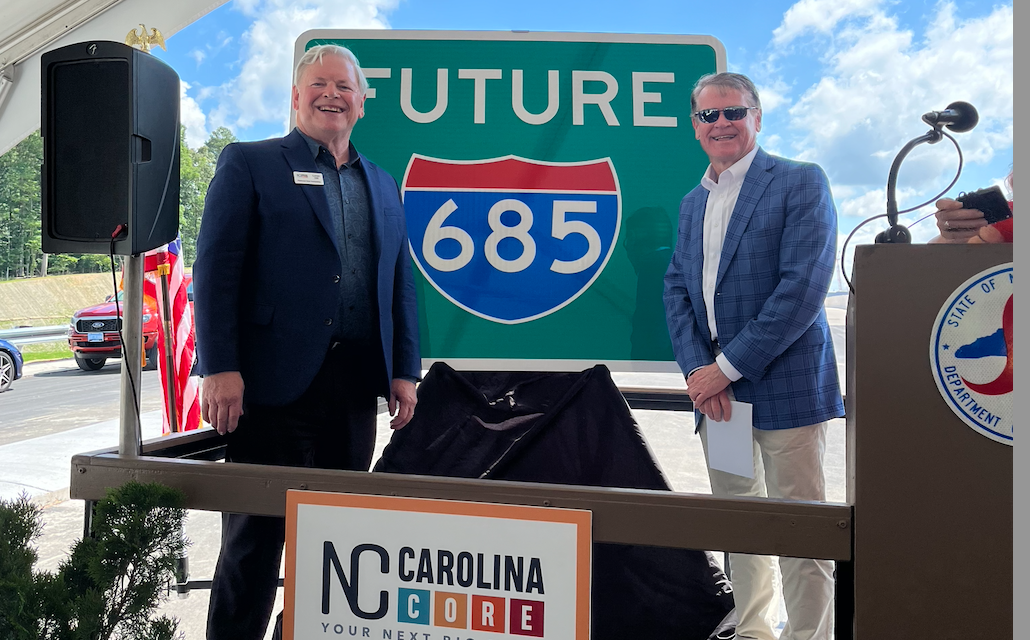
CORRIDOR DESCRIPTION
Here's a map of the potential corridor published by the Triangle Area Rural Planning Organization (TARPO), a voluntary association of local governments in Chatham, Lee, Moore, and Orange Counties, on November 18, 2021. Notice the indecision as to whether the route should follow US 421 all the way to I-95 or head south to Fayetteville via NC 87, though an article on the May 20 sign unveiling discussing the difficulties of upgrading parts of US 421 south of Sanford seem to indicate the US 421 route to Dunn:
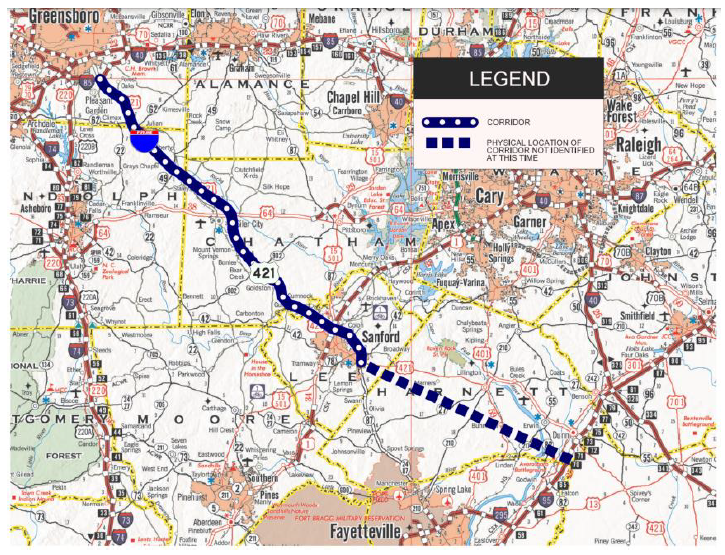
A later alternative map published in 2024, source currently unknown, possibly by NCDOT or a newspaper, showed 3 possible alternative corridors for I-685 south/east of Sanford:
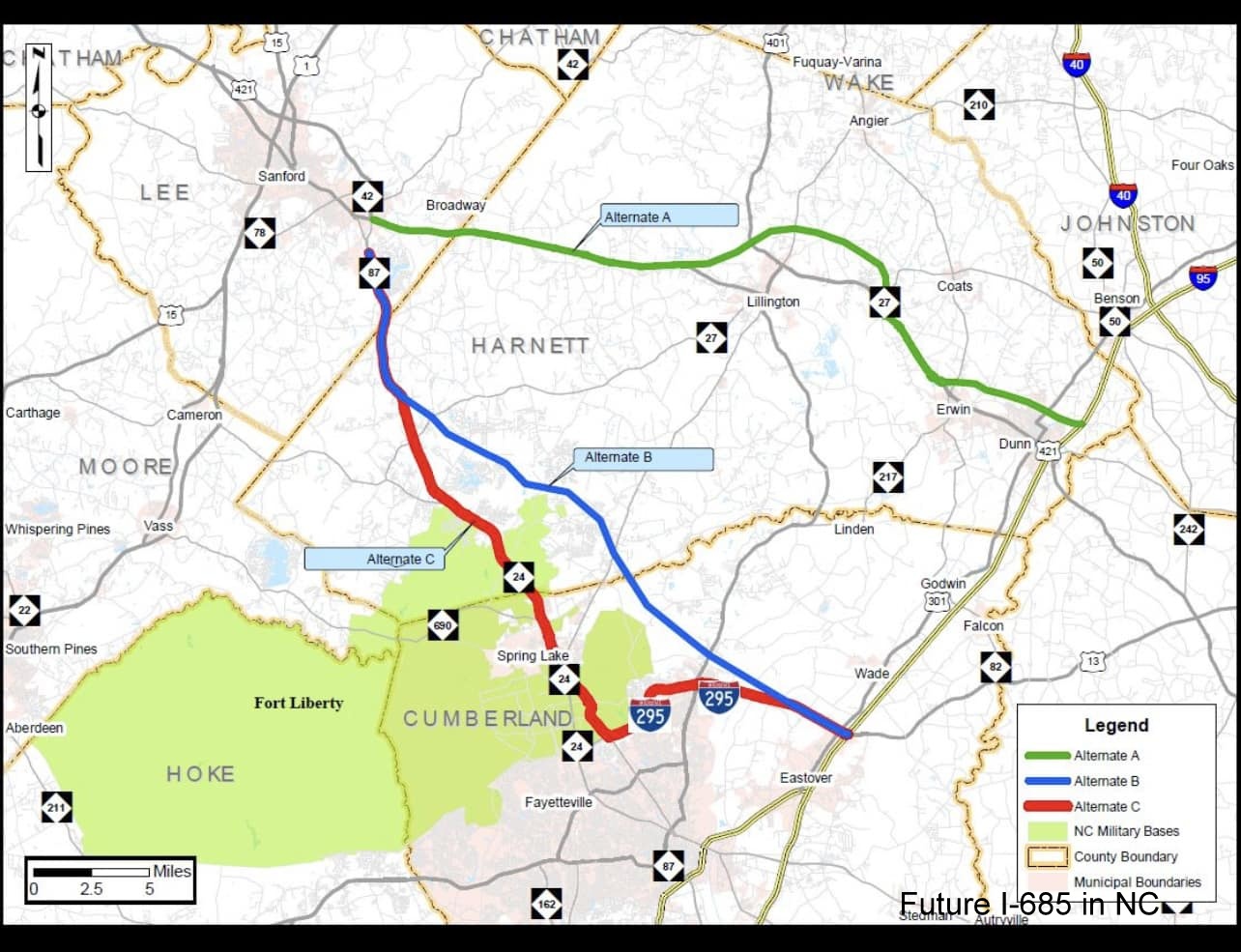
Alternative A would follow the US 421 corridor to Dunn with portions, especially the segment linking to I-95 on a new alignment.
Alternative B would initially follow the NC 87 corridor then on a new alignment between Swann and I-295 near Spring Lake, then using I-295 to access I-95.
Alternative C would mostly follow the NC 87 corridor to I-295 near Fort Liberty (formerly Fort Bragg), then using I-295 to access I-95.
It is unknown whether any of these alternatives are 'official' or if any studies about their costs and benefits have been funded.
Alternative C would require little new road construction but would require upgrades of the existing NC 87 roadway. If I-685 is signed along a portion of I-295 it would make it the third two 3-digit interstate concurrency in North Carolina (I-785/I-840, I-587/I-795). There is only 1 other one in the rest of the country, I-680/I-271 in Cleveland.
CURRENT CONSTRUCTION PROJECTS (Updated 8/25/25)
There are currently 2 projects underway related to Future I-685. 1. The building of the Julian Airport/Toyota Battery Plant, Project C204702, as of June 10, 2025 was 69.4% complete, however, this was only a .24% increase from November 2024. Further, the revised completion date of August 14, 2024 still has not been changed.6 The interchange opened southbound in July 2024 along with the northbound on-ramp, the northbound off-ramp was finished by the end of the summer (see photos below). 2. The conversion of the Shiloh Road and Starmount Road intersections with US 421 into interchanges in Liberty, Division Project HE-0004. As of July 31, 2025 was 75.8% complete, up only from 62% complete seven months earlier. According to the NCDOT Real Time Traffic site the Shiloh Road exit may have been completed by April 2025. The official completion date for the project was moved however from December 11, 2025 to May 1, 2026.7
There were no other funded projects in the 2024-2033 STIP to improve US 421, or other possible routes,
to interstate standards. The Draft 2026-2035 STIP released in January 2025 had only 1 project listed, for
Guilford County, R-2612B, the conversion of the Neelly Road intersection with US 421 to an interchange. This
project was completed in July 2024.8 There are no other Future I-685 projects listed
along US 421. Future Interstate designation typically allows for 30 years time before the interstate must be
completed, and currently NCDOT does not appear to be in a hurry.
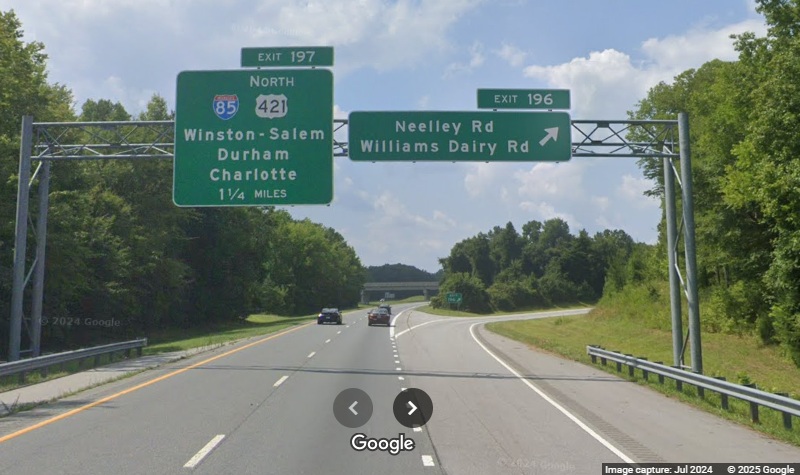
The new overhead signage on US 421 North for the Neelley Road/Williams Church Road exit, only 1 1/4 Miles south of the I-85 Greensboro Loop exit.
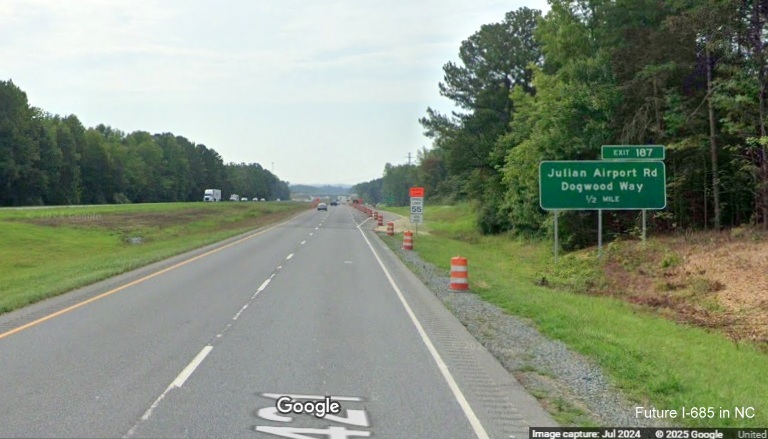
The new 1/2 Mile advance sign on US 421 South, the 1 Mile advance had not be put up at this time, instead a portable VMS was used to indicate the approaching exit.

After the new 1/2 Mile advance sign there is an auxiliary sign for Toyota, presumably for the battery plant, and not a new town with that name.
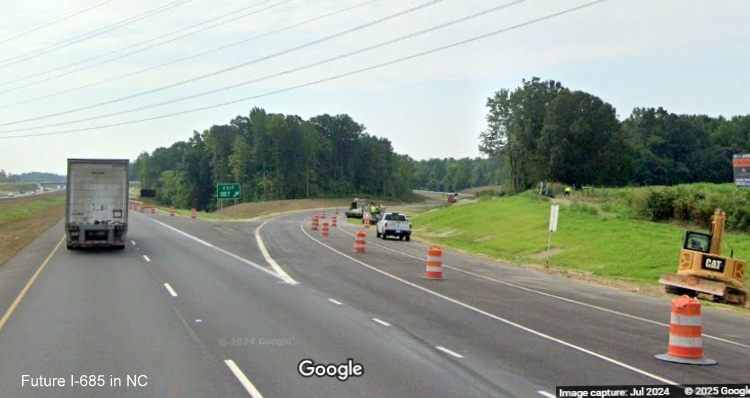
There was still construction going on at the newly opened exit ramp headed south.

Approaching the Julian Airport exit on-ramp which is prior to the bridge.

A closer look at the new bridge over US 421.
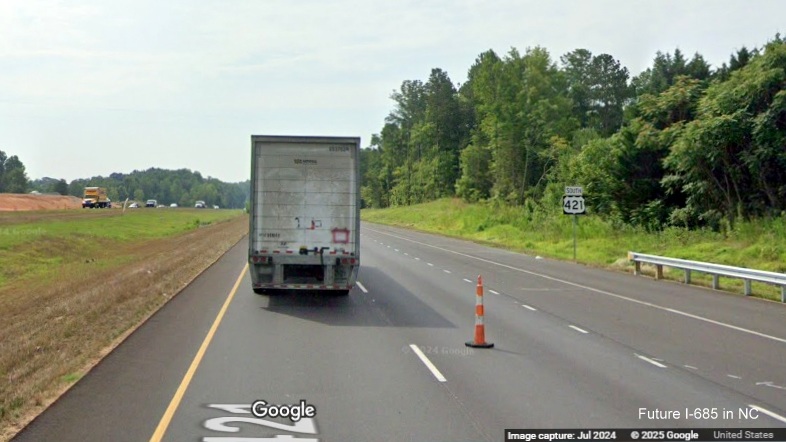
A new US 421 South reassurance marker after the exit, the interstate standard shoulders continue about 1/2 mile heading south. Turning around...
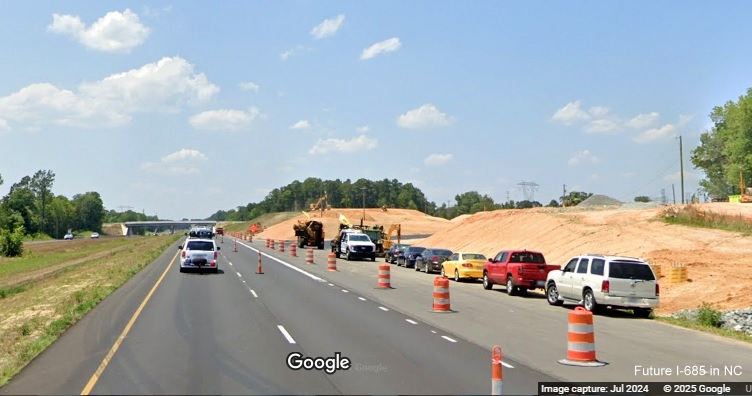
The Airport Road exit ramp was still under construction headed north in July.
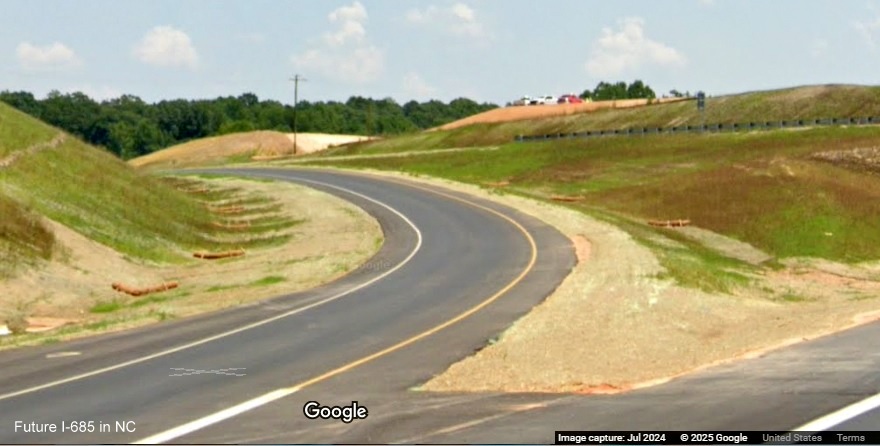
Looking back towards the northbound on-ramp which apparently was open.
Here's one of the official Future I-685 signs put up along US 421 in Sanford, photo by Tracy Snead:

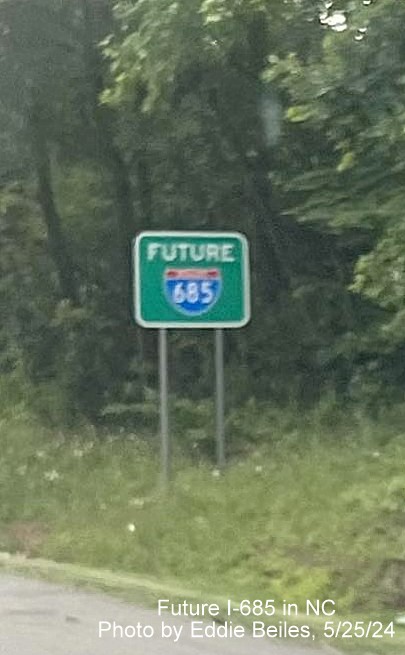

View of new bridge being built for new exit to access Toyota Battery plant in Julian as seen from US 421 North.
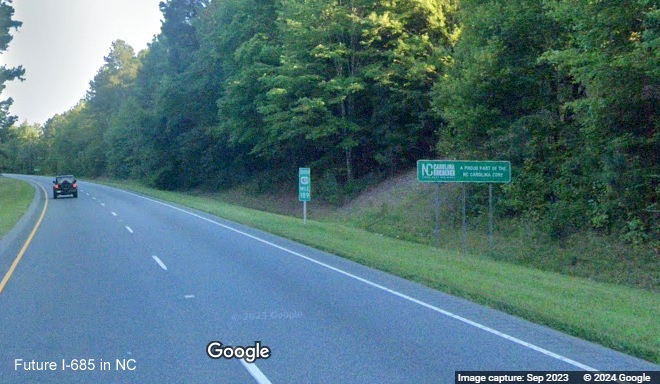
Sign advertising NC Carolina Crossroads/NC Core Megasite along US 421 South prior to the new exit for the Toyota Battery plant.
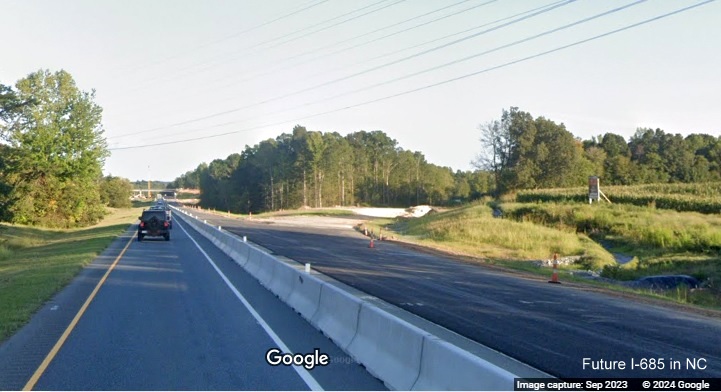
US 421 South approaching the new ramp to access the Toyota Battery plant still under construction.
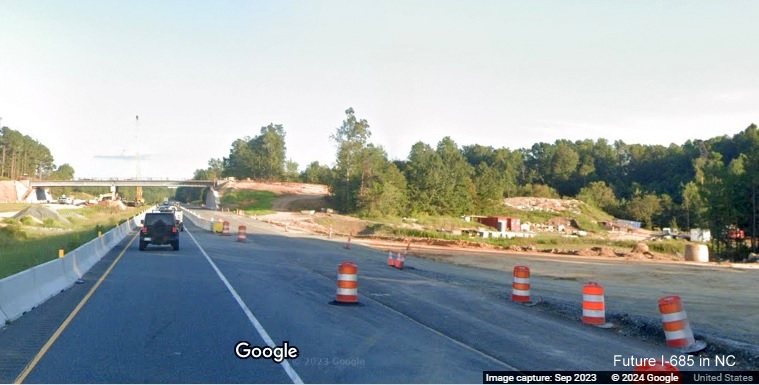
View of future off-ramp for new exit to access Toyota Battery seen prior to the bridge on US 421 South.

View of new interstate standard bridge being built for the Toyota Battery plant from US 421 South. The bridge was completed in May 2024.